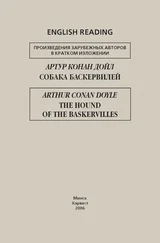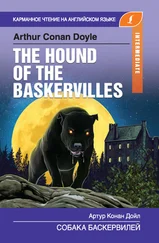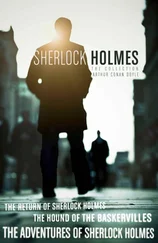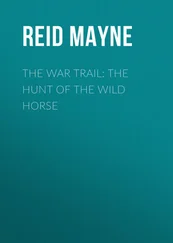Crusher: Police constable.
Joss: Luck.
Ally Sloper’s Half Holiday (1884–1916). A weekly comic newspaper built around the popular comic strip character of Ally Sloper, created by Charles Henry Ross and Marie DuVal.
I could use this footnote to reveal the identity of the holder of this title — or at least the name he most commonly used — but Dame Philomela assures me that, even after a 120 years, this would not be advisable: ‘You’d be risking a lot more than getting your pussy’s ear clipped!’
The Si-Fan: A Chinese criminal-political faction, active throughout the nineteenth and early twentieth centuries.
See: John Watson and Arthur Conan Doyle, ‘The Speckled Band’, The Strand Magazine, 1892.
See: John Watson and Arthur Conan Doyle, ‘The Red-Headed League’, The Strand Magazine, 1891.
The draper’s clerk was H.G. Wells, who evidently learned something about this business. See: The War of the Worlds, Pearson’s Magazine, 1897, and ‘The Crystal Egg’, The New Review, 1897.
Less well remembered than rival cinema pioneers the Lumière Brothers, Georges Méliès or Thomas Edison, Paul Aloysius Robert (1870–1944) was a significant contributor to the early days of the motion picture. He directed What Happened to Maisie Under the West Pier (1895), the first British film to be seized and suppressed as pornographic, and A Fight with Sledgehammers in Rottingdean (1902), labelled the ‘original kinema “nasty”’. On the strength of Moran’s memoirs, it seems he could have laid claim to the invention of special effects techniques later associated with Méliès.
See Thomas Hardy, ‘Tess of the d’Urbervilles: A Pure Woman Faithfully Presented’, The Graphic, 1891.
The American jurist Roy Bean (c. 1825–1903) dismissed a case against Paddy O’Rourke because — after close examination of the Revised Statutes of Texas — he declared ‘homicide is the killing of a human being, however I can find no law against killing a Chinaman’. At the time, Bean’s saloon-cum-court in Vinegaroon, Texas, was surrounded by 200 Irish labourers who declared they would lynch the judge if O’Rourke were convicted. This might have influenced the decision. By the standards of his times, Bean was a lenient judge. Most of those he found guilty were fined the amount of money they had about them at the time of arrest and set free; he only sentenced two men to hang, and one of those escaped.
Colonel Thomas Blood (1618–80) talked his way into the jewel house of the Tower of London, posing as a clergyman, and made off with the Crown jewels. He and his confederates were caught on Tower Wharf. Charles II, supposedly taken by Blood’s roguish daring, pardoned him. In preparation for the raid, Blood befriended Talbot Edwards, master of the jewel house, and cajoled a private viewing, whereupon — presumably with roguish daring — the elderly man was struck with a hammer, knocked down, bound and gagged and stabbed. Blood’s gang forgot to bring suitable swag-bags and had to improvise: Blood hammered flat St Edward’s crown, his brother-in-law sawed the sceptre into two parts and a man named Parrot stuffed the orb down his trousers.
See Frederic Van Renssaelaer Dey, ‘3,000 Miles by Freight; or, The Mystery of a Piano Box’, The Nick Carter Library, 1891.
Written between 1115 and 1142.
Smith, Elder & Co., 1865.
For a more detailed account of the Vermissa Valley Scowrers and the attempted murder at Birlstone Manor, see John Watson and Arthur Conan Doyle, ‘The Valley of Fear’, The Strand Magazine, 1914–15.
‘The Green Eye of the Yellow God’, J. Milton Hayes, 1911. Moran’s quotation of the once-popular monologue establishes this section of his memoirs was written at least twenty years after the event. Internal evidence suggests chapters one, two and six were written much earlier.
See: John Watson and Arthur Conan Doyle, ‘The Sign of the Four’, Lippincott’s Monthly Magazine, 1890.
See: James Malcolm Rymer and Thomas Peckett Prest (attr.), ‘The String of Pearls: A Romance’, The People’s Periodical and Family Library, 1846–7. Sweeney Todd and Nellie Lovett (or Lovat) are remembered for gruesome crimes — throats cut in the barber’s chair, corpses recycled as meat pies — but they were, at bottom, mere thieves. The string of pearls, property of Mark Ingestre (or Ingestrie), was stolen from a sailor, Lieutenant Thornhill, who was supposed to convey it to Ingestre’s sweetheart, Johanna Oakley. Ingestre’s enquiries into Thornhill’s disappearance lead to the exposure of Todd and Lovett.
See: Wilkie Collins (ed.), The Moonstone, Tinsley Brothers, 1868.
When they first met, Moran was under the impression that Moriarty ‘kept no notes, no files, no address book or appointment diary’. It seems the Professor was vain enough to foster that impression, though Moran eventually learned this was not the case. This is more evidence that ‘The Six Maledictions’ was written as much as thirty years after ‘A Volume in Vermilion’.
See: Malcolm Ross and Bram Stoker, The Jewel of Seven Stars, Heinemann, 1903.
Ermanno Wolf-Ferrari’s I gioielli della Madonna (libretto by Carlo Zangarini and Enrico Golisciani) is drawn from news reports of these events. The opera premiered in Berlin in 1911 under the title Der Schmuck der Madonna but did not play in Italy until 1953.
In 1881, the Fenian Ram — a submarine designed by John Philip Holland — was constructed by the Delameter Iron Company of New York for use against the British. Rather than pay Holland, the Fenian Brotherhood stole the vessel from him, then realised none of them knew how to pilot it. Holland refused to give instructions in its use, and the IRB were stuck with something they could neither steer nor sell.
Edgar Allan Poe, ‘The Purloined Letter’, The Gift for 1845, 1844. The secret hiding place of the stolen letter is in plain sight — in the letter rack of a hotel.
See: Harold Manders and E.W. Hornung, ‘The Fate of Faustina’ and ‘The Last Laugh’, The Black Mask, Richards, 1901. Note that Manders, unlike Moran, accords A.J. Raffles credit for arranging the killing of Corbucci. It is not clear from the memoirs whether Moran disliked Raffles on principle or had a specific beef with the gentleman cracksman.
See: Dashiell Hammett, The Maltese Falcon, Alfred A. Knopf, 1930.
See: William Hope Hodgson, ‘Carnacki the Ghost Finder’, The Idler, 1910.
The Fal Vale swing bridge was the site of a later, famous railway disaster — which gave rise to another ghostly legend. See: Arnold Ridley, The Ghost Train, St Martin’s Theatre, 1923.
Читать дальше
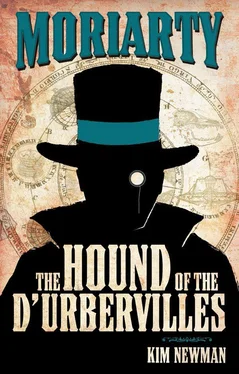

![Беар Гриллс - The Hunt [=The Devil's Sanctuary]](/books/428447/bear-grills-the-hunt-the-devil-s-sanctuary-thumb.webp)


